It sounds like something straight out of a fairy tale — a majestic palace suddenly surfacing from the depths of a reservoir in Iraq. But this is no legend. This is Kemune Palace, a real, ancient architectural marvel that has re-emerged after being submerged for over three millennia, revealing secrets from a forgotten empire.
When the water recedes, the past returns
During an unusually dry season, water levels at the Mosul Reservoir — part of the mighty Tigris River — dropped dramatically. What emerged was astonishing: the stone walls of an ancient palace rising from the lakebed, as though history itself had decided it was time to speak.
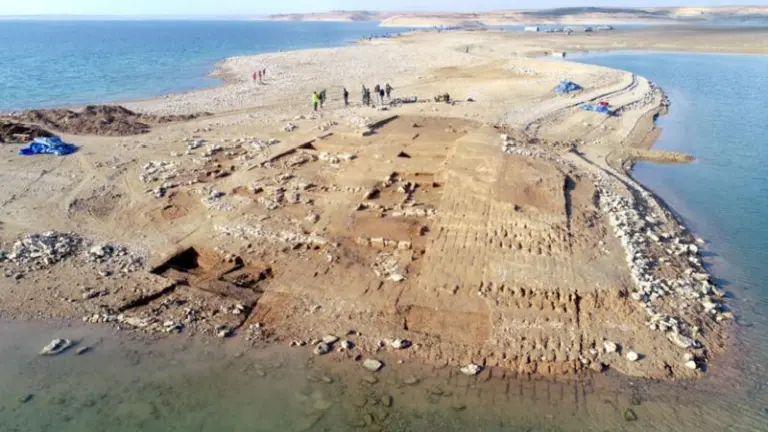
>> The stunning 1,000-year-old castle rising from the Atlantic Ocean
This magnificent discovery is believed to date back to the Mitanni Empire, a little-known but once-powerful civilization that flourished in Northern Mesopotamia between 1500 and 1300 BCE. The palace, hidden beneath water for thousands of years, has now returned to the surface — bringing with it a flood of questions and wonder.
A timeless stronghold on the banks of the Tigris
Perched on a raised mound around 20 meters from the riverbank, the palace has remained remarkably intact. Its walls stand up to 7 meters high, nearly 2 meters thick — a testament to the engineering prowess of the Mitanni.
On the western slope, archaeologists uncovered a massive mud-brick wall, likely built to reinforce the structure on uneven terrain, suggesting a stronghold designed for both grandeur and defense.
The surrounding area, stretching over a kilometer in length and half a kilometer wide, includes:
- The central palace structure
- Several large adjacent buildings
- A network of ancient pathways
- And even a burial site — hinting at a self-contained royal complex
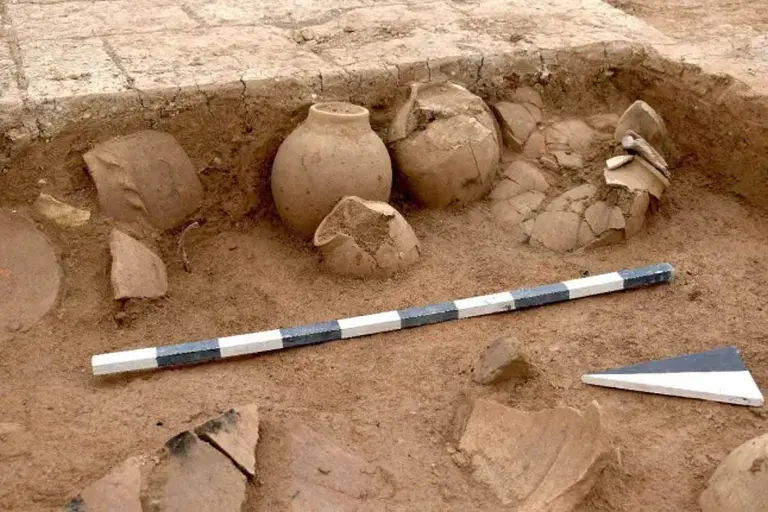
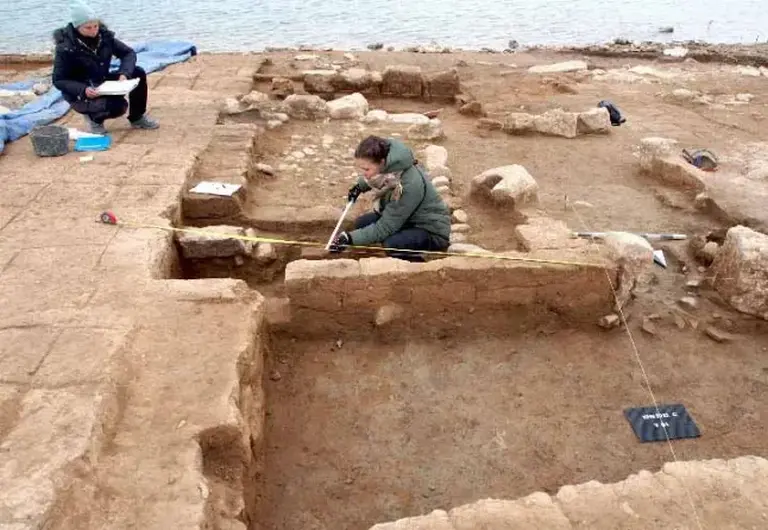
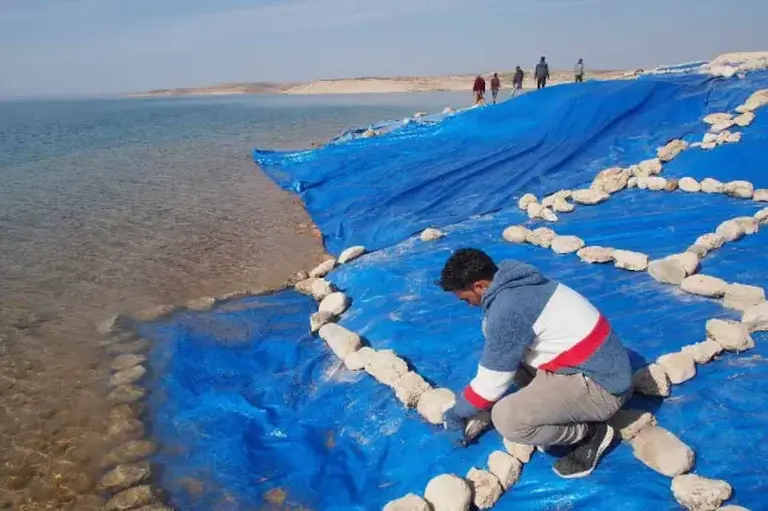
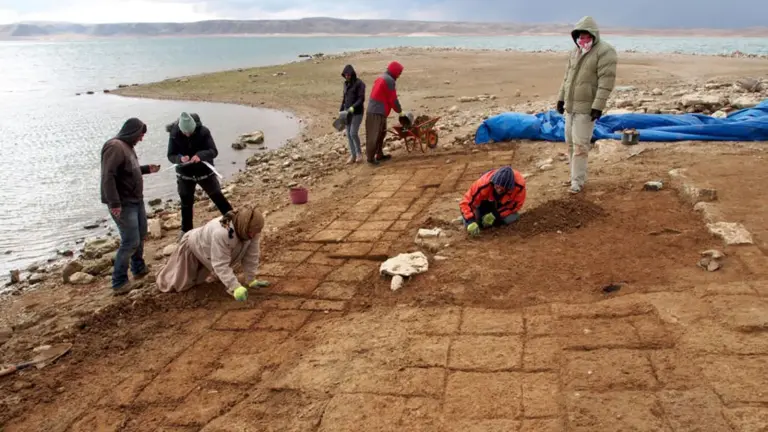
>> Chand Baori: A thousand-year-old stepwell maze beneath the earth in India
A rare glimpse into the lost Mitanni Empire
Kemune Palace offers an extraordinary opportunity to explore the enigmatic Mitanni — a civilization rarely mentioned in textbooks, yet crucial to the political dynamics of ancient Mesopotamia. Its unexpected reappearance has ignited excitement among historians, archaeologists, and curious travelers alike.
This is more than a destination — it’s a journey through time. Every weathered stone and crumbling staircase carries the weight of centuries, whispering tales of kings, courtiers, and forgotten rituals.
Step out of the present, and into a legend
For travelers who crave the mystical and the unknown, a visit to this stretch of the Tigris isn’t just about sightseeing — it’s about awakening the imagination. As the sun sets over the ruins and the wind rustles through ancient stone corridors, you might just feel as though you’ve slipped into another world — one where history breathes beneath your feet.
Be among the rare few to witness a palace reborn from the depths. Who knows — before long, the waters may rise again, and this treasure may once more vanish beneath the surface of time.
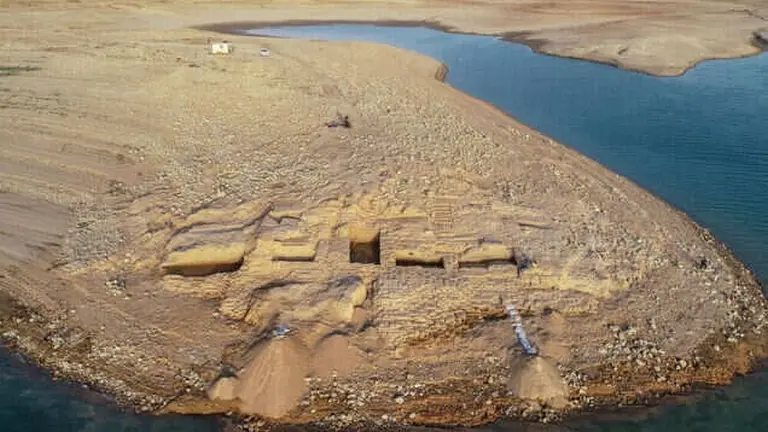
FAQ
What exactly was discovered in Iraq beneath the water?
In a surprising twist of nature and history, a 3,400-year-old palace emerged from the waters of the Mosul Dam Reservoir in the Kurdistan region of northern Iraq. The ancient structure had been hidden beneath the Tigris River for decades until drought conditions caused water levels to recede, revealing this extraordinary archaeological treasure.
Which civilization built this palace?
The palace is believed to have belonged to the Mittani Empire, a powerful yet mysterious kingdom that flourished during the 15th to 14th centuries BCE in the Near East. Although not as widely known as the Assyrians or Babylonians, the Mittani were major players in Bronze Age diplomacy and warfare, rivaling the Hittites and Egyptians.
Where exactly is the palace located?
The ruins are found in the Kemune area along the eastern bank of the Tigris River. They were submerged following the construction of the Mosul Dam in the 1980s. The fact that the palace remained relatively well-preserved under water for decades is nothing short of remarkable.
What makes this discovery so special?
This isn’t just a pile of ancient stones—archaeologists found:
- Preserved walls up to 7 meters high
- Colorful murals
- Clay tablets with cuneiform inscriptions
- Intricately designed plaster floors and wall paintings
The site offers rare insight into the architecture, administration, and diplomacy of the little-understood Mittani Empire.
What do the cuneiform tablets reveal?
Several clay tablets were recovered and are still being translated. Early analysis suggests they may reference royal correspondence and governance, potentially shedding light on Mittani relations with other empires of the time, including the Hittites and the Egyptians.
Why was the palace underwater for so long?
The palace was flooded in the 1980s when the Mosul Dam was constructed. Since then, it has only surfaced during periods of severe drought, which lower the water level and allow access to submerged ruins. This particular re-emergence in 2018 allowed for a rapid archaeological excavation.
Has this discovery changed how historians view the Mittani Empire?
Yes. The Mittani Empire left behind few written records, and its history has largely been pieced together from references in the texts of other civilizations. Discovering a palace — with inscriptions intact — provides a direct link to their culture, governance, and possibly religion, offering a more vivid picture than ever before.
Can the public visit the site?
Currently, the palace is not a permanent tourist attraction, as it is usually submerged. Access depends on water levels and environmental conditions. However, discoveries from the site may eventually be displayed in Iraqi museums or published internationally.
What challenges do archaeologists face with this site?
- Limited excavation time due to rising water
- Risk of erosion or water damage
- Political instability and resource constraints in the region
- The urgency to document and preserve artifacts before they’re lost again
Despite this, archaeologists are optimistic that the palace could lead to more discoveries in the region that rewrite parts of Mesopotamian history.
Why should we care about an ancient palace in Iraq?
Because it’s not just about a palace — it’s about rediscovering a lost chapter of human civilization. The Mittani ruled a multicultural empire, and their influence likely shaped the politics, architecture, and warfare of the Bronze Age. Each new discovery from the site is a piece of the puzzle of our collective history.
The story of Kemune Palace is just one of many hidden treasures waiting to be discovered in Iraq — a land where ancient civilizations once flourished and left behind a legacy written in stone, sand, and spirit.
If this mysterious palace has stirred your curiosity, don’t stop here. Dive deeper into Iraq’s rich cultural tapestry by exploring more unforgettable destinations:
- The ruins of Babylon – once one of the greatest cities of the ancient world
- The city of Najaf – a spiritual heartland filled with devotion and architecture
- The Zagros Mountains – for breathtaking nature and ancient cave dwellings
- The Marshes of Southern Iraq – a UNESCO World Heritage site where time stands still
Read more travel stories, guides, and cultural deep dives [here] — and let Iraq surprise you, one marvel at a time.






